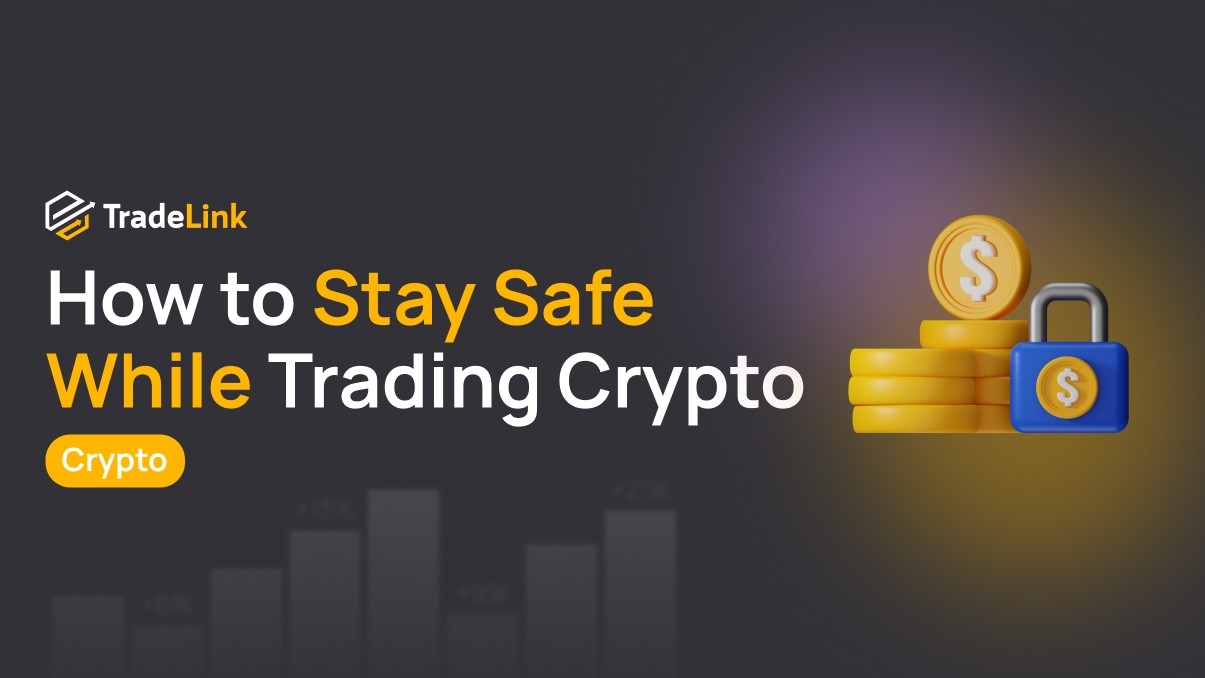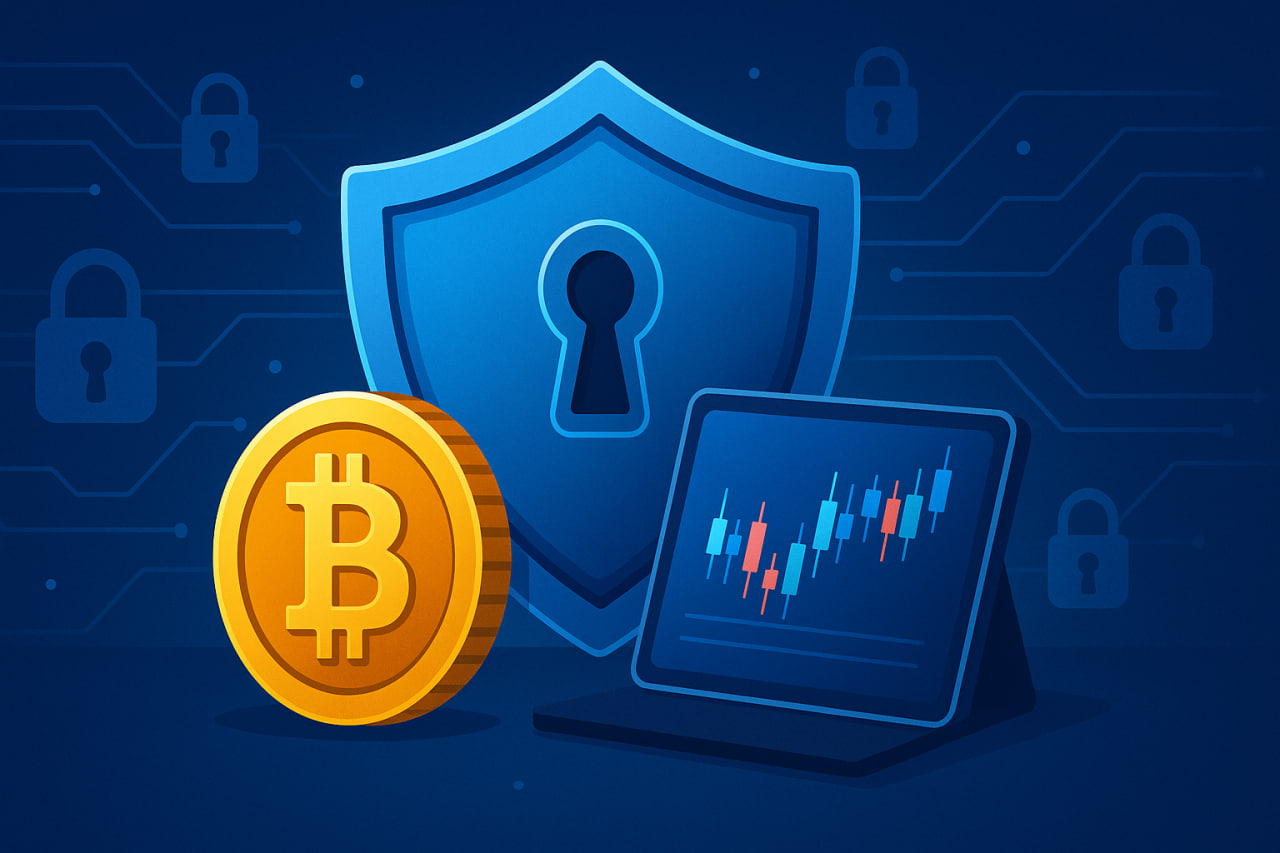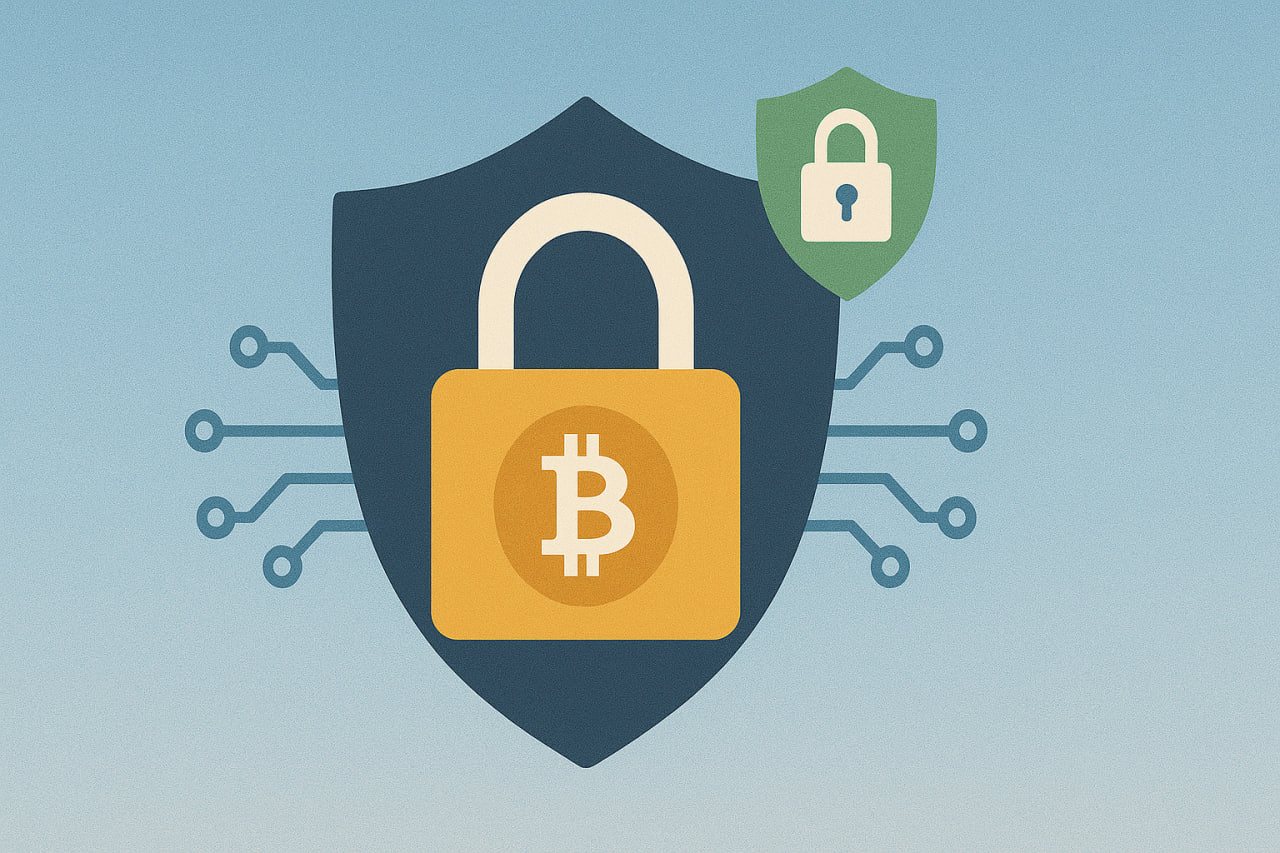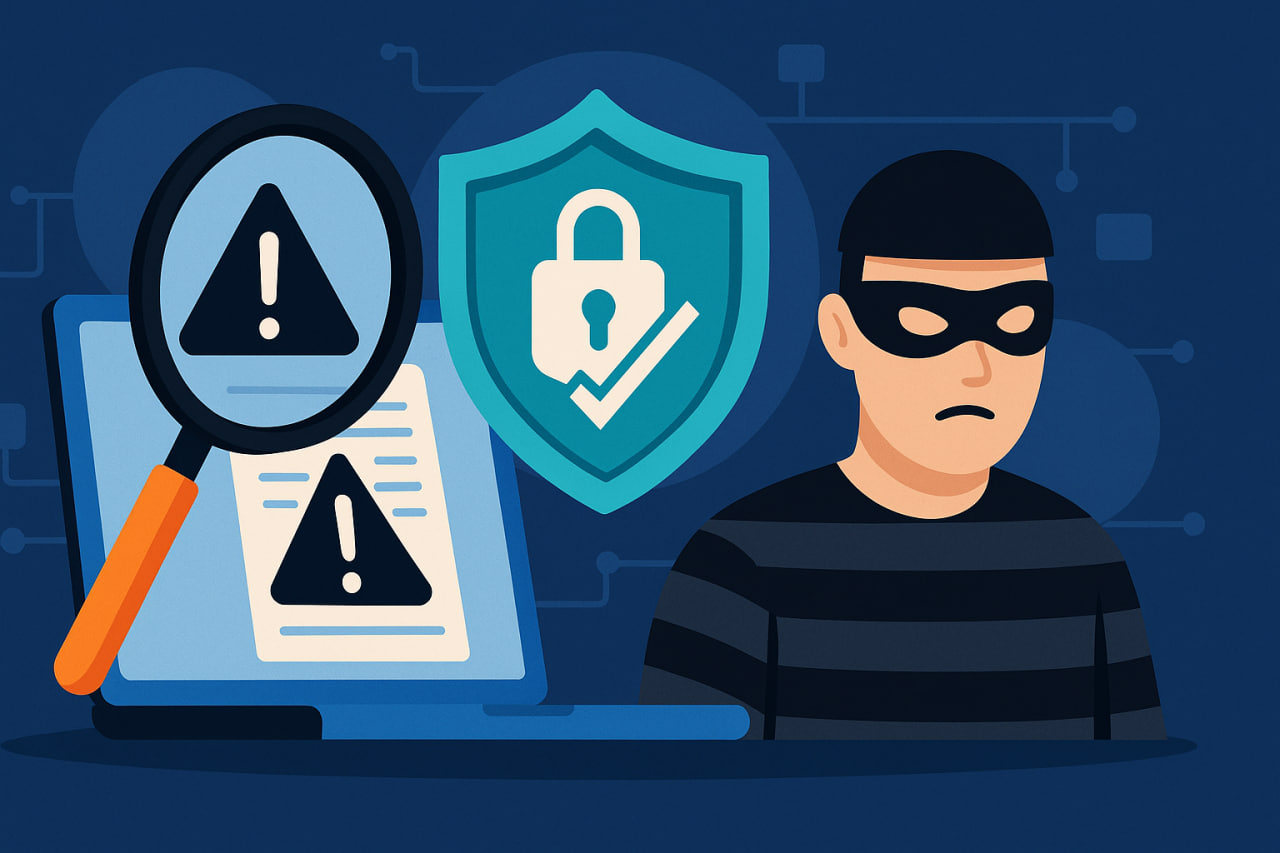How to Stay Safe While Trading Crypto

Contents
- Introduction
- Why Security in Crypto Trading is Crucial
- Main Risks in Cryptocurrency Trading
- How to Choose a Secure Crypto Exchange
- Securing Your Crypto Wallet and Private Keys
- How to Recognise and Avoid Scams
- Additional Security Measures
- Risk Management in Trading
- Conclusion
Introduction
The cryptocurrency market attracts millions of people due to its accessibility and growth potential. However, a low entry barrier and limited knowledge of risks make its participants targets for scammers and hackers.
To protect your funds, it’s essential to understand the risks in advance and take precautionary measures. This article will help you learn how to trade cryptocurrency safely, choose a reliable exchange, secure your wallet, and avoid scams.
Why Security in Crypto Trading is Crucial

Unlike bank accounts, cryptocurrencies lack centralised protection. If you lose access to your wallet or fall victim to scammers, recovering funds is nearly impossible. Hackers, phishing attacks, and fraudulent schemes cause billions of dollars in losses annually.
Understanding threats and basic protection principles is the foundation for secure crypto trading. Awareness allows you to minimise risks and focus on trading.
Main Risks in Cryptocurrency Trading
Trading cryptocurrencies comes with unique threats that differ from traditional financial markets. Knowing these risks helps traders prepare for potential issues.
List of Key Threats
- Exchange Hacks: Hackers can access platforms with weak security, leading to the theft of users’ funds.
- Phishing Attacks: Scammers create fake websites or send emails to steal passwords and keys.
- Fraudulent Projects: Fake ICOs or tokens promise high returns but disappear after collecting funds.
- Pump and Dump Schemes: Manipulators artificially inflate an asset’s price to sell at its peak, leaving traders with losses.
These threats require careful attention and preventive measures, which will be discussed further.
How to Choose a Secure Crypto Exchange

Selecting a reliable trading platform is the first step toward safe trading. Not all exchanges are equally secure, and mistakes in choosing one can be costly.
Factors for Evaluating an Exchange
- Security Level: Look for platforms with a history of resilience to hacks and transparent data protection policies.
- Two-Factor Authentication (2FA): 2FA is essential for account protection.
- Fund Insurance: Some exchanges offer insurance funds to compensate for losses in case of hacks.
- Reputation and Reviews: Research the platform’s history, licenses, and user feedback.
- KYC/AML Compliance: Exchanges that adhere to Know Your Customer (KYC) and Anti-Money Laundering (AML) regulations are generally more reliable.
Comparison of Centralized and Decentralized Exchanges
| Characteristic | Centralised Exchanges (CEX) | Decentralised Exchanges (DEX) |
|---|---|---|
| Asset Management | The exchange holds your funds and keys | You control your funds and keys (with some exceptions) |
| Security Level | Medium to high for popular platforms | High, but requires technical knowledge |
| Ease of Use | User-friendly for beginners | More complex for newcomers |
| KYC/AML | Mandatory | Usually not required |
The choice between CEX and DEX depends on your goals, expertise, and security priorities.
Securing Your Crypto Wallet and Private Keys

Your crypto wallet is your personal safe. Losing keys or having your wallet compromised can lead to irreversible consequences. Understanding the types of wallets and their protection methods is crucial.
Types of Wallets and Their Features
- Hot Wallets: Connected to the internet, convenient for frequent transactions, but vulnerable to hackers.
- Cold Wallets: Stored offline (e.g., on USB devices), suitable for long-term storage.
- Hardware Wallets: Physical devices like Ledger or Trezor provide maximum security.
Recommendations for Protecting Keys
- Store private keys in a secure location, such as on paper or in a safe.
- Never share keys with third parties.
- Use hardware wallets for large amounts.
- Regularly back up seed phrases.
Proper security measures will help protect your assets even if your device is compromised.
How to Recognise and Avoid Scams

Scammers constantly refine their tactics, exploiting the trust of new users. Knowing their methods helps you avoid traps.
Examples of Common Scams
- Fake Airdrops: Scammers offer “free” tokens, requiring access to your wallet.
- Rug Pulls: Project developers collect funds and disappear, leaving you with a worthless token.
- Social Engineering: Fraudsters pose as technical support to extract your data.
- Phishing Websites: Fake exchange or wallet pages steal your information.
To protect yourself, verify website URLs, avoid suspicious links, and never connect wallets to unverified platforms.
Additional Security Measures
Technical tools and discipline help minimise risks. Multi-factor authentication, vigilance, and other protective measures are essential for every trader.
Effective Security Tools
- Two-Factor Authentication (2FA): Use apps like Google Authenticator instead of SMS.
- Address Whitelisting: Configure your exchange to allow withdrawals only to pre-approved wallets.
- Email Protection: Use strong passwords and a dedicated email for crypto-related activities.
- VPN and Secure Networks: Avoid public Wi-Fi and unreliable VPN services when accessing exchanges or wallets, as they may intercept, modify, or scan your traffic to steal funds.
By implementing basic security measures, you create additional barriers for attackers, reducing the likelihood of hacks and losses.
Risk Management in Trading
Emotions and a lack of strategy can lead to financial losses. Risk management helps preserve capital even during market volatility.
Risk Management Practices
- Stop-Loss Orders: Set orders to automatically close losing positions.
- Portfolio Diversification: Don’t invest all your funds in a single coin.
- Avoid FOMO: Base decisions on analysis, not hype.
- Keep a Trading Journal: Record your actions to analyse mistakes and successes.
The more chaotic and emotional your trading, the higher the chance of errors. A well-thought-out strategy and composure are key to stable and secure trading.
Conclusion
Security in crypto trading requires constant attention and discipline. Neglecting risks once may seem harmless, but it can become a habit, and one day, your hard-earned investments could vanish from your accounts. To prevent this, it’s critical to follow safety practices. Security is the foundation for protecting your funds.